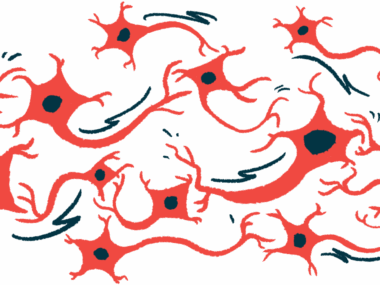Omega-3 Fatty Acid Seen to Restore Energy to Brain Cells Lacking MeCP2
Written by |

Treatment with omega-3 fatty acid restored the function of mitochondria, the production centers of cellular energy, in brain cells called astrocytes lacking MeCP2 — the key protein in most cases of Rett syndrome, a study reported.
The study, “Docosahexaenoic acid increased MeCP2 mediated mitochondrial respiratory complexes II and III enzyme activities in cortical astrocytes,” was published in the Journal of Biochemical and Molecular Toxicology.
In about 90–95% of all cases, Rett syndrome is caused by mutations in MECP2, the gene providing instructions for making the MeCP2 protein. MeCP2 regulates the activity of other genes by switching them on or off and plays a critical role in brain development.
While MECP2 is expressed throughout the body, it is thought that Rett symptoms result from the effect of the mutations in the brain, with evidence supporting a role for both neurons and glia — the neurons’ support cells — in mediating the symptoms.
Disruptions to mitochondria have been observed in cells of the central nervous system (brain and spinal cord) in Rett patients and rodent models.
Docosahexaenoic acid (DHA) is an omega-3 fatty acid present in mitochondria and shown to have neuroprotective and antioxidant effects. Some Rett patients have benefited from omega-3 fatty acids, which can be obtained from dietary sources such as fish, nuts and seeds.
However, the mechanisms through which DHA acts to exert its protective effects, and the cell types in which it acts, have not been established.
Researchers in India investigated the effects of DHA in cell cultures of astrocytes — a type of glia cell — derived from the brains of young rats.
Messenger RNA (mRNA) is produced from instructions given by a gene and serves as a template for protein production. The researchers used a small interfering RNA, which binds to MeCP2 mRNA to cause it to degrade and prevent it from making a functional MeCP2 protein — a technique called a knockdown.
This knockdown process in their lab cell culture mimicked the MeCP2 deficiency observed in Rett patients, but restricted it to only one cell type — astrocytes.
Since genes provide information to make mRNA, measures of mRNA levels can be used as an indicator of a gene’s activity, also called gene expression.
As expected, the researchers observed lower MeCP2 gene expression under these knockdown conditions.
Adding DHA significantly restored MeCP2 expression, which rose to levels even higher than those in healthy astrocytes serving as control cells. Further analysis showed that levels of the MeCP2 protein were also restored with DHA treatment.
Likewise, expression of brain-derived neurotrophic factor (BDNF) increased with DHA treatment. MeCP2 regulates the expression of BDNF, a neuroprotective protein suggested to be of therapeutic value in Rett syndrome.
Gene expression of Uqcrc1, a mitochondrial protein, also increased when MeCP2 was knocked down, returning to normal activity levels with DHA’s use.
Assessments of the activity of enzymes associated with mitochondrial function showed some enzyme activity reduced in MeCP2-lacking astrocytes, indicating problems in the workings of mitochondria. DHA was able to return it to higher than normal levels, the scientists reported.
DHA’s use also lowered cellular calcium levels, which were elevated in MeCP2-deficient astrocytes. Altered calcium levels can indicate problems in the regulation of mitochondrial energy production and lead to cell death.
These findings point to mitochondrial function being dysregulated in astrocytes lacking MeCP2, and suggest treatment with DHA can reverse some of these deficits.
“Overall, the data indicate multiple target sites and roles of DHA,” the researchers wrote.
“Further studies at the molecular and cellular levels might give us an enhanced mechanistic overview of its therapeutic relevance with respect to mitochondrial functioning in astrocytes,” they concluded.






